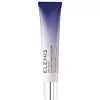What's inside
What's inside
 Key Ingredients
Key Ingredients

 Benefits
Benefits

 Concerns
Concerns

 Ingredients Side-by-side
Ingredients Side-by-side

Water
Skin ConditioningGlycerin
HumectantCoco-Caprylate
EmollientCocos Nucifera Oil
MaskingGlyceryl Oleate Citrate
EmulsifyingBuglossoides Arvensis Seed Oil
EmollientBellis Perennis Flower Extract
Skin ConditioningHieracium Pilosella Extract
MaskingMica
Cosmetic ColorantSimmondsia Chinensis Seed Oil
EmollientPanthenol
Skin ConditioningAcrylates/C10-30 Alkyl Acrylate Crosspolymer
Emulsion StabilisingHydroxyacetophenone
AntioxidantPhenoxyethanol
PreservativeXanthan Gum
EmulsifyingTocopherol
AntioxidantPerilla Ocymoides Seed Oil
Skin ConditioningSodium Hydroxide
BufferingTocopheryl Acetate
AntioxidantDisodium EDTA
Sodium Citrate
BufferingCitric Acid
BufferingSodium Benzoate
MaskingMatthiola Longipetala Seed Oil
EmollientSodium Dehydroacetate
PreservativeHydrolyzed Yeast Protein
Skin ConditioningWater, Glycerin, Coco-Caprylate, Cocos Nucifera Oil, Glyceryl Oleate Citrate, Buglossoides Arvensis Seed Oil, Bellis Perennis Flower Extract, Hieracium Pilosella Extract, Mica, Simmondsia Chinensis Seed Oil, Panthenol, Acrylates/C10-30 Alkyl Acrylate Crosspolymer, Hydroxyacetophenone, Phenoxyethanol, Xanthan Gum, Tocopherol, Perilla Ocymoides Seed Oil, Sodium Hydroxide, Tocopheryl Acetate, Disodium EDTA, Sodium Citrate, Citric Acid, Sodium Benzoate, Matthiola Longipetala Seed Oil, Sodium Dehydroacetate, Hydrolyzed Yeast Protein
Water
Skin ConditioningPropylene Glycol
HumectantGlycerin
HumectantOryza Sativa Hull Powder
AbrasiveAmmonium Acryloyldimethyltaurate/Vp Copolymer
Sclerotium Gum
Emulsion StabilisingDiazolidinyl Urea
PreservativeSodium Benzoate
MaskingSodium PCA
HumectantDisodium EDTA
Sodium Lactate
BufferingPotassium Sorbate
PreservativeArginine
MaskingAspartic Acid
MaskingHydrolyzed Wheat Protein
Skin ConditioningPCA
HumectantCentaurea Cyanus Flower Extract
AstringentLinum Usitatissimum Seed Extract
PerfumingHydrolyzed Hyaluronic Acid
HumectantGlycine
BufferingAlanine
MaskingAesculus Hippocastanum Seed Extract
Skin ConditioningSerine
MaskingValine
MaskingLinalool
PerfumingCaramel
Cosmetic ColorantThreonine
Isoleucine
Skin ConditioningProline
Skin ConditioningParfum
MaskingAnthemis Nobilis Flower Oil
MaskingLavandula Angustifolia Oil
MaskingLavandula Hybrida Oil
EmollientOsmanthus Fragrans Flower Extract
MaskingPhenoxyethanol
PreservativeHistidine
HumectantPhenylalanine
MaskingSodium Hydroxide
BufferingPadina Pavonica Thallus Extract
Skin ConditioningWater, Propylene Glycol, Glycerin, Oryza Sativa Hull Powder, Ammonium Acryloyldimethyltaurate/Vp Copolymer, Sclerotium Gum, Diazolidinyl Urea, Sodium Benzoate, Sodium PCA, Disodium EDTA, Sodium Lactate, Potassium Sorbate, Arginine, Aspartic Acid, Hydrolyzed Wheat Protein, PCA, Centaurea Cyanus Flower Extract, Linum Usitatissimum Seed Extract, Hydrolyzed Hyaluronic Acid, Glycine, Alanine, Aesculus Hippocastanum Seed Extract, Serine, Valine, Linalool, Caramel, Threonine, Isoleucine, Proline, Parfum, Anthemis Nobilis Flower Oil, Lavandula Angustifolia Oil, Lavandula Hybrida Oil, Osmanthus Fragrans Flower Extract, Phenoxyethanol, Histidine, Phenylalanine, Sodium Hydroxide, Padina Pavonica Thallus Extract
Ingredients Explained
These ingredients are found in both products.
Ingredients higher up in an ingredient list are typically present in a larger amount.
Disodium EDTA plays a role in making products more stable by aiding other preservatives.
It is a chelating agent, meaning it neutralizes metal ions that may be found in a product.
Disodium EDTA is a salt of edetic acid and is found to be safe in cosmetic ingredients.
Learn more about Disodium EDTAGlycerin is already naturally found in your skin. It helps moisturize and protect your skin.
A study from 2016 found glycerin to be more effective as a humectant than AHAs and hyaluronic acid.
As a humectant, it helps the skin stay hydrated by pulling moisture to your skin. The low molecular weight of glycerin allows it to pull moisture into the deeper layers of your skin.
Hydrated skin improves your skin barrier; Your skin barrier helps protect against irritants and bacteria.
Glycerin has also been found to have antimicrobial and antiviral properties. Due to these properties, glycerin is often used in wound and burn treatments.
In cosmetics, glycerin is usually derived from plants such as soybean or palm. However, it can also be sourced from animals, such as tallow or animal fat.
This ingredient is organic, colorless, odorless, and non-toxic.
Glycerin is the name for this ingredient in American English. British English uses Glycerol/Glycerine.
Learn more about GlycerinPhenoxyethanol is a preservative that has germicide, antimicrobial, and aromatic properties. Studies show that phenoxyethanol can prevent microbial growth. By itself, it has a scent that is similar to that of a rose.
It's often used in formulations along with Caprylyl Glycol to preserve the shelf life of products.
Sodium Benzoate is a preservative. It's used in both cosmetic and food products to inhibit the growth of mold and bacteria. It is typically produced synthetically.
Both the US FDA and EU Health Committee have approved the use of sodium benzoate. In the US, levels of 0.1% (of the total product) are allowed.
Sodium benzoate works as a preservative by inhibiting the growth of bacteria inside of cells. It prevents the cell from fermenting a type of sugar using an enzyme called phosphofructokinase.
It is the salt of benzoic acid. Foods containing sodium benzoate include soda, salad dressings, condiments, fruit juices, wines, and snack foods.
Studies for using ascorbic acid and sodium benzoate in cosmetics are lacking, especially in skincare routines with multiple steps.
We always recommend speaking with a professional, such as a dermatologist, if you have any concerns.
Learn more about Sodium BenzoateSodium Hydroxide is also known as lye or caustic soda. It is used to adjust the pH of products; many ingredients require a specific pH to be effective.
In small amounts, sodium hydroxide is considered safe to use. However, large amounts may cause chemical burns due to its high alkaline.
Your skin has a natural pH and acid mantle. This acid mantle helps prevent harmful bacteria from breaking through. The acid mantle also helps keep your skin hydrated.
"Alkaline" refers to a high pH level. A low pH level would be considered acidic.
Learn more about Sodium HydroxideWater. It's the most common cosmetic ingredient of all. You'll usually see it at the top of ingredient lists, meaning that it makes up the largest part of the product.
So why is it so popular? Water most often acts as a solvent - this means that it helps dissolve other ingredients into the formulation.
You'll also recognize water as that liquid we all need to stay alive. If you see this, drink a glass of water. Stay hydrated!
Learn more about Water